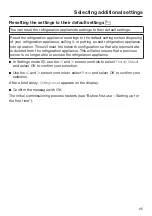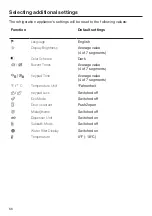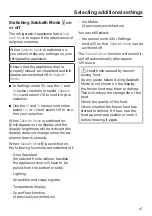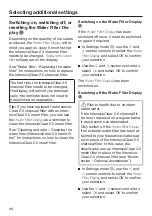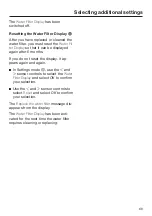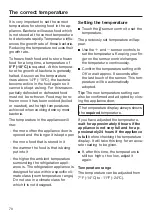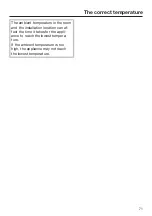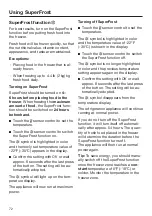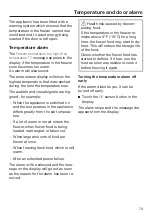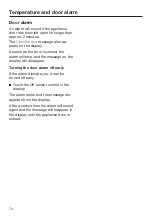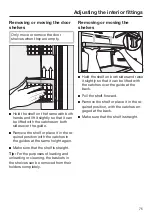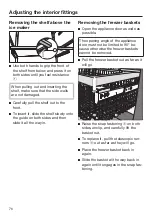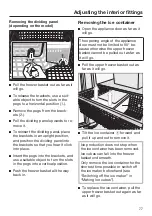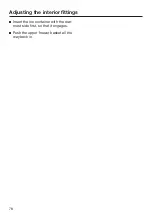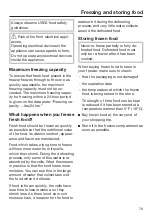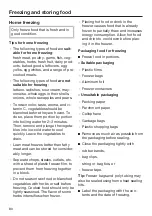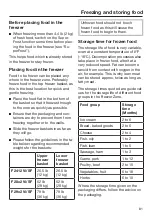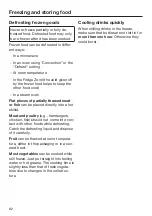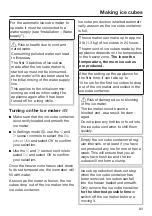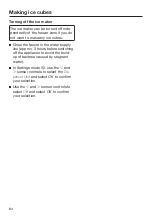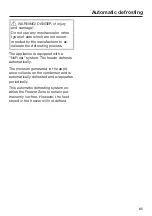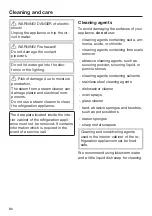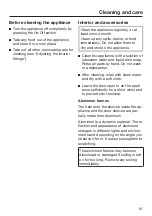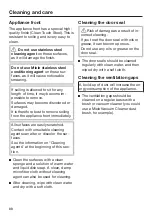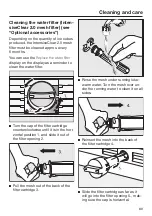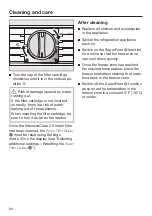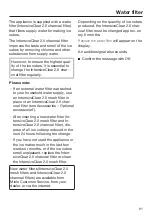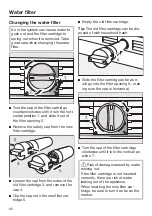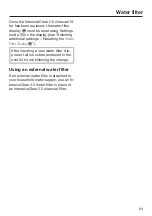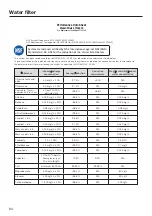
Freezing and storing food
79
Always observe USDA food safety
guidelines.
Risk of fire from electrical appli-
ances.
Operating electrical devices in the
appliance can cause sparks to form.
Do not operate any electrical devices
inside the appliance.
Maximum freezing capacity
To ensure that fresh food placed in the
freezer freezes through to the core as
quickly as possible, the maximum
freezing capacity must not be ex-
ceeded. The maximum freezing capac-
ity for freezing within a 24-hour period
is given on the data plate: “Freezing ca-
pacity ....lbs/24 hrs.”
What happens when you freeze
fresh food?
Fresh food should be frozen as quickly
as possible so that the nutritional value
of the food, its vitamin content, appear-
ance and flavor are maintained.
Food which takes a long time to freeze
will lose more water from its cells,
which then shrink. During the defrosting
process, only some of this water is re-
absorbed by the cells. What this means
in practice is that the food loses more
moisture. You can see this in the large
amount of water that collects around
the food when it defrosts.
If food is frozen quickly, the cells have
less time to lose moisture, so they
shrink less. As there is not so much
moisture loss, it is easier for the food to
reabsorb it during the defrosting
process, and very little water collects
around the defrosted food.
Storing frozen food
Never re-freeze partially or fully de-
frosted food. Defrosted food must
only be re-frozen after it has been
cooked.
When buying frozen food to store in
your freezer, make sure to check:
- that the packaging is not damaged
- the expiration date
- the temperature at which the frozen
food is being stored in the store
The length of time food can be kept
is reduced if it has been stored at a
temperature warmer than 0°F (-18°C).
Buy frozen food at the very end of
your shopping trip.
Store it in the freezer compartment as
soon as possible.

